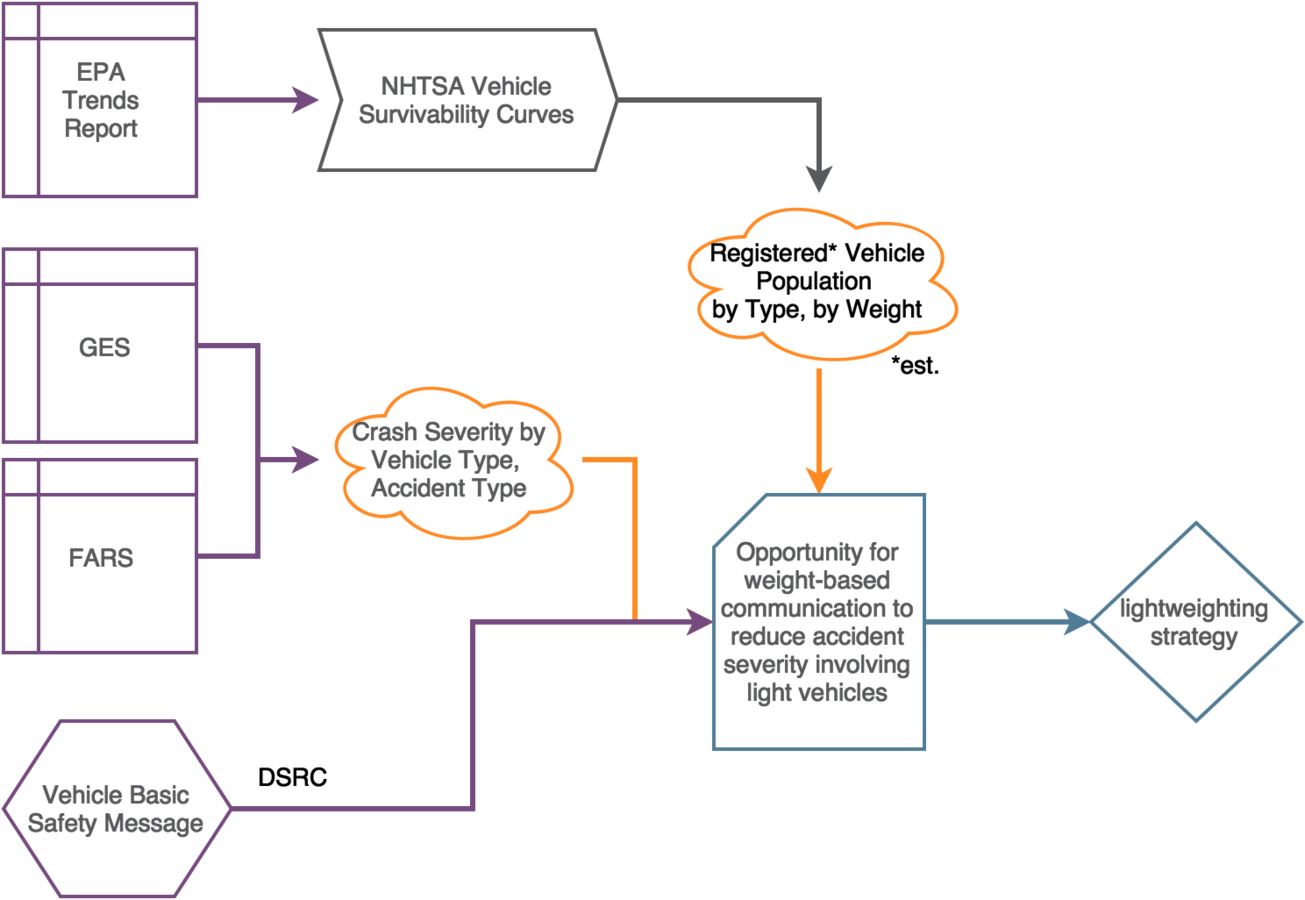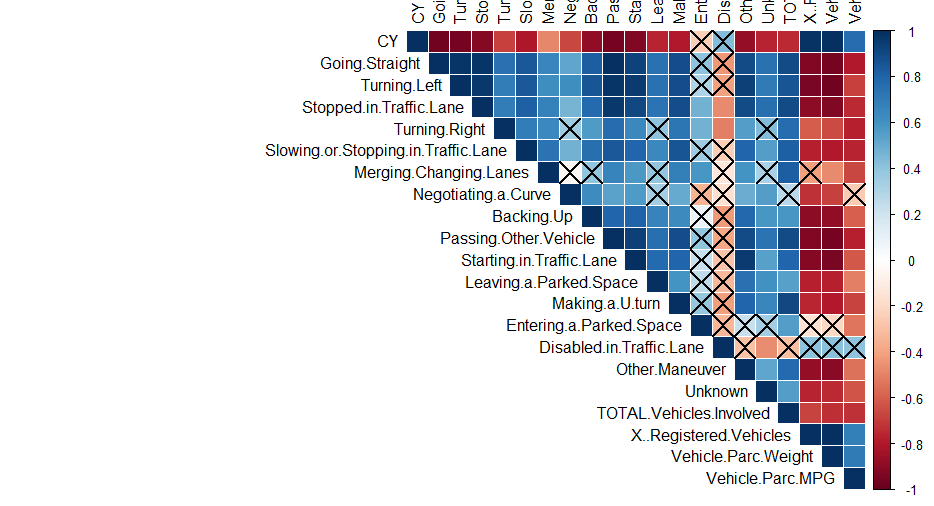How can active safety be used for vehicle lightweighting ?
CE 595 Intelligent Transportation Systems
Alex Pawlowski
24 November 2015


slides.com/alexpawlowski/ce595final/live
An opportunity for weight-based vehicle basic safety messaging
Overview
- Motivation
- ITS Solution to Problem
- Methodology
- Findings
- Limitations
- Recommendations
How can active safety be used for vehicle lightweighting?
An opportunity for weight-based vehicle basic safety messaging
Motivation
- Regulatory push to 54.5 mpg by 2025
- hybrids ~ 3% of market
- EVs, while growing, ~1% with price, range as inhibitors
- Conventional gasoline engine strategies may not be enough
- Connected Vehicles - growing ITS opportunity
- DSRC provides V2V (+ V2I) band for vehicle communication
- levels of coordination
- Active safety elements growing in vehicles today
How can active safety be used for vehicle lightweighting?
An opportunity for weight-based vehicle basic safety messaging
ITS Solution
- Vehicle weight plays a role in crash severity in cases of large (1 tonne+) disparities
- despite advances in crash safety structure
- Reducing vehicle weight is an opportunity to improve fuel economy, maintain performance, and reduce total accident energy


[top] http://www.its-jp.org/english/its-green-safety-showcase/
[bottom] http://www.thedetroitbureau.com/wp-content/uploads/2014/09/Opel-Insignia-Automated-Driving-ITS.jpg
How can active safety be used for vehicle lightweighting?
An opportunity for weight-based vehicle basic safety messaging
Methodology
How can active safety be used for vehicle lightweighting?

An opportunity for weight-based vehicle basic safety messaging
Descriptive Statistics
How can active safety be used for vehicle lightweighting?
An opportunity for weight-based vehicle basic safety messaging

Findings
- In the small time leading to a crash, VBSM can provide a course trajectory change to the vehicles to direct crash energy away from occupants
- mitigating previous safety risk in vehicles of
lightest weight
- mitigating previous safety risk in vehicles of
How can active safety be used for vehicle lightweighting?
An opportunity for weight-based vehicle basic safety messaging
Limitations
- no vehicle simulations were conducted
- experimental effects of communicating weight differential in a crash scenario uncertain
- NHTSA vehicle survivability calculations haven't been updated since 2006
- cars last longer in actuality than predicted
- potential to underestimate the crash severity of older vehicles
- overestimate the average weight of the fleet
- cars last longer in actuality than predicted
How can active safety be used for vehicle lightweighting?
An opportunity for weight-based vehicle basic safety messaging
Recommendations
- Vehicle lightweighting will play a greater role to meet more stringent CO2 targets
- Active safety in the lightest vehicles could address added crash risks with the largest vehicles instead of added passive safety elements
- weight differential communicated with VBSM provides an opportunity for best mitigation
- Vehicle simulation should be used to address best strategies in crash severity reduction with weight communicated in VBSM
How can active safety be used for vehicle lightweighting?
An opportunity for weight-based vehicle basic safety messaging
ce595final
By Alex Pawlowski
ce595final
Final Presentation on 595 Project
- 863



